Keeping indoor humidity in its optimal range is crucial for comfort, health, and preservation of your house. A humid indoor space promotes mold growth, damages the house’s structural components, raises allergens, and may aggravate the quality of your indoor environment. For instance, portable dehumidifiers are heavily used to tackle humidity, but these appliances only manage moisture issues in a single room. This article examines the pros and cons of dehumidifiers and their suitability so that you can make an informed decision about this technology.
What is a Whole House Dehumidifier and How Does It Work?
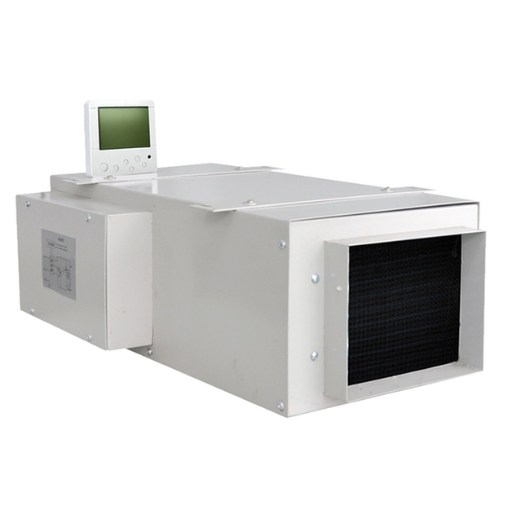
A central house dehumidifier is an intricate system designed to control humidity within an entire house. It takes in hot, moist air at the intake, removes the moisture from the air with the help of cooling coils, and finally, circulates the dehumidified air through the HVAC system or the home’s air ducts. With this in place, the humidity levels within the house can be easily controlled, which improves the air quality, prevents mold formation, and saves the house’s structural integrity.
All There is to Know about Centralized Whole House Dehumidifiers
The installer will place the ducts at the whole-house dehumidifier units, and air circulation will take place, making sure the home’s vents receive less moisture in the air. A centralized dehumidifier consists of an exhaust duct, condensing unit, scavenging system, air coils, and vent systems, just to name a few. When the warm air reaches the condensing unit, it evaporates, lifting moisture from the air to make the environment cooler.
Typically, the effectiveness of such systems is assessed using factors such as capacity (normally registered in pints per day with 70 – 130 pints/day as common range), energy efficiency (judged through energy factor with higher EF being desirable) and area of effectiveness (expressed in square feet which deems the structure of the building). Such measurement functions are complemented with airflow metrics, usually expressed in cubic feet of air per minute (CFM) for the velocity of air movement and dehumidification rates. Such selection and arrangement can be accomplished only by adjusting these measures with the humidity load of the house, as well as the time of the year.
Connecting whole house dehumidifiers with HVAC units
To achieve clean indoor air and the right amount of moisture in buildings, whole-house dehumidifiers are combined with HVAC systems. The connection is made by attaching the dehumidifiers to the HVAC system’s air return ducts. This enables the dehumidifier to perform simultaneously with the HVAC system functioning in cooling mode, thus offering the same air circulation throughout the house.
The CFM of the dehumidifier must be considered an important parameter to account for during integration–an ideal CFM rating should correspond to the HVAC unit so as not to create any airflow barriers. Seal and duct, which should not be too large, or else the system’s performance might degrade while applying unwanted physical restrictions. The energy factor must correlate with the HVAC energy factor too for the sake of minimizing operational costs. Besides, the drainage system that is already in place should be effectively integrated with the condensate management system for sufficient moisture management to take place. A balanced indoor air environment can be achieved by incorporating the calibration of required parameters well.
Evaluation of a dehumidifier HVAC as compared to a portable unit
Home dehumidifiers are designed to heat control the entire residence through HVAC connection. Whole home dehumidifiers work as a better option due to their higher capacity, which increases durability and minimizes maintenance, hence creating an enhanced indoor environment. Portable units on the other hand tend to be cheaper and are more cost effective since these do still require a single room setup, these do tend to take more time with the insulation due to the necessity to set them up and empty out the water tanks more frequently for larger rooms. For long tradition settings, the whole home system works the best and is practical, however, the portable units are more effective and efficient when required for short time spans.
What Are the Benefits of Installing a Whole Home Dehumidifier?

Installing whole-home dehumidifiers helps alleviate allergy symptoms by improving indoor air quality since mold does not grow and dust mites are reduced. Moreover, they aid humidity control throughout the house, which minimizes the strain on HVAC systems, thereby making them more efficient and provides the inhabitants with greater comfort. Also, these systems help maintain the integrity of the house by preventing issues that might arise due to excessive moisture, including peeling paint and warping wooden structures. This will lead to an improvement in energy efficiency and long-term cost benefits.
Improving indoor air quality and reducing humidity levels
A whole-home dehumidifier can be used to enhance air quality within a house and humidity in the space. This unit is similar to a cooler, an advanced version that cools moist air and afterwards sends it back into the designated space after extracting moisture from it. The optimal humidity levels of indoors are usually between 30 to 50 percent and most units retain those levels as well, which in return helps in enhancing the general comfort while also minimizing the chances of mold growth.
The technical specifications of such systems typically include a pint capacity (often between 50 to over 100 depending on the space covered), airflow rates expressed in cubic meters per minute (CFM), and energy efficiency measures that include being ENERGY STAR compliant. Such devices are best equipped within an HVAC system and have built in hygrometers for automatic direct humidity level control. These features together offer a great functioning package to enhance living conditions and facilitate property maintenance over an extended period.
Protecting Your House from Excess Moisture and Mold
There is the need to keep indoor air humidity levels between 30-50% to protect against moisture damage and the growth of mold and mildew. Excess moisture can also enable the growth of some dangerous mold types that affect the structural integrity of a building over time and cause various health conditions like allergies and respiratory problems. An efficient cure for such issues is the use of a dehumidifier provided throughout the house as part of an HVAC system.
Such systems are operated on several parameters, the first being their capacity expressed in pints of water removed over a day, which on average lies between 50 to over 100 pints based on the area and the moisture level in the house, the second one being airflow rate identified in cubic foot of air per minute, or CFM for short. CFM is simply the abbreviation for cubic feet per minute, which is the measurement unit in the narrated flow rate of air. In this case, the higher the CFM value, the quicker the moisture gets extracted, making for a more optimal unit. Staff with attachments that are endorsed with an ENERGY STAR insignia are then constructed to utilize less energy but without compromising usefulness, as we prefer lower reliability. We offer robust dehumidifiers equipped with hygrometer sensors that automatically detect and adjust humidity levels, providing accurate and consistent dehumidification without any manual effort. Moisture-related problems can be effectively dealt with with proper set up and consistent checks of such systems.
Retail your energy by making your home comfortable
Focus on improving natural ventilation, using energy-saving appliances and increasing insulation to make your home more comfortable and energy efficient. Effective insulation reduces indoor temperature fluctuations and alleviates heating and cooling load requirements. For instance, refrigerators that feature new inverter technology translate to increased performance but less energy use. In addition, optimal positioning of windows and outside vents to enhance natural ventilation reduces reliance on mechanical cooling devices and thus results in better energy savings and indoor air quality. Regular servicing of HVAC equipment also helps with efficiency and durability, lowering electricity bills and increasing comfort at home.
Is a Whole-House Dehumidifier Right for Your Home?
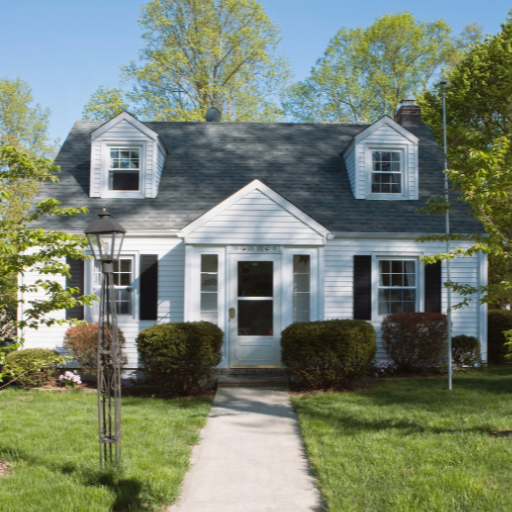
If you live in a location with high humidity or if your house tends to be particularly damp, then a dehumidifier that can work around the entire house might be the solution you are looking for. A central dehumidifier connects with the HVAC system, unlike portable units. Both mold and mildew can be prevented with these dehumidifiers while also purifying air around the house. These dehumidifiers help protect furniture and houses. These central dehumidifiers efficiently solve issues for homeowners that have worsened air circulation, consistent dampness in the basement and condensation. When considering installing such a unit, remember that hiring a certified professional to install and program is imperative. After installation it’s also essential to carry out maintenance as well to retain performance levels. If maintenance and installation are an issue for you, this probably isn’t the best solution to go for.
Determining buildings optimal humidity
There are a few strategies that assist in determining what are the optimal humidity levels according to the building that are being used. The first step is to check the indoor relative humidity or the RH through a hygrometer device.The typical optimal relative humidity for a room is around 30%-50%. However, if humidity levels are constantly above this limit, then mold and wood deformation are likely over time due to their increased levels of allergens. On the other hand, if the levels go below 30%, chances are dry skin and discomfort while breathing can occur as well as static electricity.
Identifiable signs of high moisture in the area include moisture condensation on a window, a musty smell, or peeling paint. At the same time, cracked furniture and dry air can identify a low humidity level. Some technical parameters should be considered, such as the allocated parameters for the capacity of the dehumidifier in pints per day PPD, which should be relative to your house’s square footage and moisture content. A dehumidifier system rated over PPD 50 is more suitably effective for houses with more moisture content and a more excellent square foot living area.
You will also want to consider your house’s ventilation and insulation, as subpar airflow or insulation leakage can worsen the humidity imbalance. Tackling these factors and picking an adequately specified dehumidification system offers a holistic and effective solution for improving indoor air quality.
When the factors like zone, area or climate control systems in place are integrated
Dehumidifiers for domestic usage are widely available. Nonetheless, to achieve the desired efficiency with a portable design, one must take a few important points into consideration alongside the environment. For example, settings such as sub-level rooms, basements or spaces with a damp atmosphere necessitate using a dehumidifier rated 50 PPD or above to regulate humidity levels. If the specific location requires a moderate level of dehumidification, then a rating of 30 PPD is adequate. These ratings are applicable for most average room sizes and appropriate humidity levels, however, the specific conditions of an individual unit must be set in accordance to the specifications of the space.
Also, it is essential to look at the energy efficiency of the model in question, as energy Star-certified models are ideal when looking for long-term operational cost savings. Also, noise level in decibels, which complements the dehumidification capacity and energy rating of the unit, should be kept in mind, when considering installations in living areas. Proper location of the systems and constant servicing, like periodic emptying of the collection tanks or filter cleaning, further improve dehumidifier performance and useful life. Taking care of related issues like better housing envelopes and proper ventilation is also important to control the indoor air quality and humidity levels sustainably throughout the year.
Considering the cost and effectiveness of whole house dehumidifiers
The cost of these whole-house dehumidifiers is many times higher than that of portable units, but their effectiveness improves the cost-effectiveness of the systems, which shows how effective these systems are treated. With the automation of these systems, there is ample room for improvement and stiff competition when it comes to controlling humidity: no longer needing to employ various portable units across the house aids in managing electricity expenses after some time. Improving air quality and reducing mold problems gives an advantage in the long run as the likelihood of the building being damaged and health problems is reduced. Not to mention, a good system is designed to work within an HVAC and is virtually invisible when adequately installed reducing needless energy consumption. Whole house solutions often pay for their expensive initial outlays by offering extensive coverage and better durability with low maintenance.
How to Choose the Best Whole House Dehumidifier for Your Home?
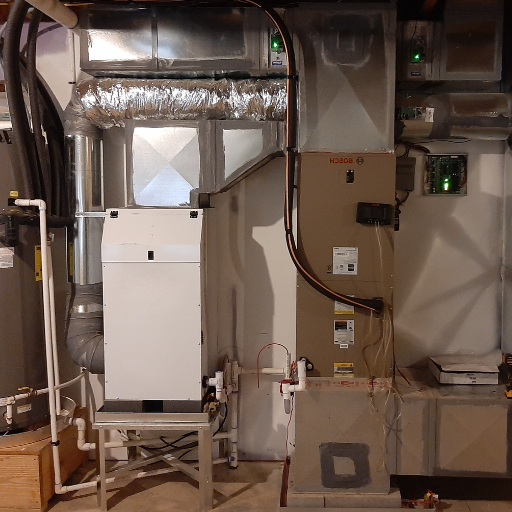
In terms of whole-house dehumidifiers, their capacity is measured in pints per day, so first evaluate the size of your house alongside the humidity in the region you live in, then assess the rest of the things. Your current HVAC systems needs to be taken into consideration as well to ensure the unit works properly. Save on operating expenses by opting for keen energy-efficient models that are Energy Star certified. Adjustable humidity control, easy-to-clean filters, and low noise should also be considered for convenience. Finally, consider the warranty and customer service of the manufacturer regarding how long your investment will last and the support you will receive.
Key features to look for in a whole-home dehumidifier
With energy efficient designs being made available to many manufacturers, this should be the foremost concern of any consumer as it will reduce utility expenses over time. Choose those models that can handle too much moisture in big places as this will boost performance. A built-in humidity sensor and automatic defrost make use of the equipment more comfortable and functional. An integral part of household comfort, quieter models are better suited to the monitoring unit located in the living room, than the control unit. Modern materials, cleaning access and easily washable filters also prolong the life of the devices.
Tips for Sizing Your Dehumidifier Correctly
One of the most crucial aspects of understanding how to use a dehumidifier is that it is always best to choose one appropriate to the task. This not only guarantees proper operation but also saves on the unnecessary energy expenditure. In most cases, the area in which the dehumidifier is tasked to operate and its ambient moisture generally determine the size needed. They are usually described in the number of pints removed in a day, for instance a 30 pint model will ideally suit a room of about 1500 square feet and has a moist atmosphere, 50 pint units tend to be effective in the drier areas of around 3000 square feet.
As well as the conditions already defined, several other possibilities need to be considered, such as the ambient climate, laundry utilization, and so forth. An increased capacity for moisture removal is often required for laundering and basement rooms. Places with excessive moisture generally tend to exceed the 70 pint capacity thus requiring a further advanced model. Steady dehumidification is also boosted by ensuring the unit has a sufficient Air flow rate, usually measured in CFM cubic feet per minute, especially helpful in larger or more challenging spaces. Always check the manufacturer’s tables or instructions corresponding to the device specs covering the room size/conditions to achieve the best placement outcomes.
What’s Involved in Installing a Whole Home Dehumidifier?
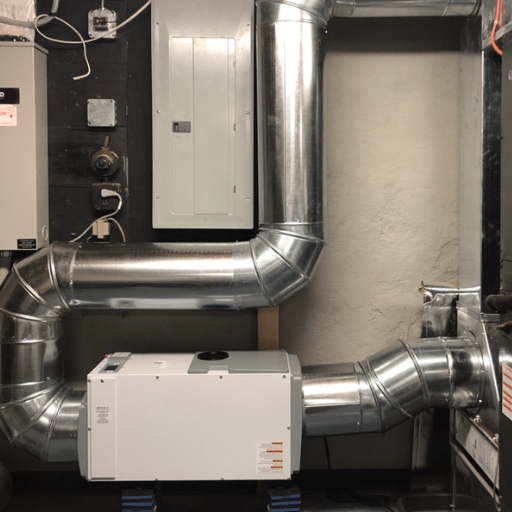
Whole home dehumidifier installation requires some steps to achieve the desired efficiency. In most cases a whole home dehumidifier is fully integrated into the existing HVAC system. Here, the home’s ductwork is accessed to help determine the ideal positioning of the dehumidifier for the most airflow. The next step involves establishing electrical connections to the unit, and ensuring that Power is supplied to the unit and any local electrical codes are met. Even drainage is a necessary facet here, which means that either a condensate pump or a gravity drain system is used to eliminate the moisture collected continuously during the operation of the device. Calibration and testing follow installation, ensuring that the installed device performs within the set parameters in coordination with a provided HVAC system for a wider humidity range. For such an advanced piece of equipment, whole home dehumidifiers require professional consideration. Therefore you are advised to contact licensed HVAC professionals in case you require installation since incorrect installation may reduce efficiency and the device’s lifespan.
The Usability Of The Whole House Dehumidifier As A Professional Install Or DIY Approach
It is always crucial to consider the difficulty level and your qualifications when choosing to hire a professional or a do-it-yourself to install a whole home dehumidifier. A professional installation guarantees that your unit is perfectly integrated into your HVAC system, local electrical and safety regulations are correctly observed, and precision performance tuning is executed. Setting it up as a DIY will help you save quite a bit, however, the risks associated with it are improper electrical set up, incorrect drainage system, and non-optimal performance of the unit. Until and unless you have HVAC system installation experience, getting a professional install from a licensed pro is by far the best solution to ensure the unit works well and for a long time.
Combining a dehumidifier to your already existing HVAC unit
When aiming for effective simultaneous use of a dehumidifier and an HVAC unit, several critical steps must be taken to guarantee both systems’ proper functionality and performance. For starters, the parameters of the dehumidifier must be appropriately adjusted to cater to your HVAC system’s needs and the humidity level in your space. Proper positioning usually depends upon the placement of the unit within the system; hence, the installation is done near the return air duct to allow the unit to perform optimal airflow and moisture removal. Proper airflow must be provided to the unit at all times so that the motion of air is not restricted, which allows optimum operation of the device and necessitates connecting the unit to the system’s ductwork. Proper care must also be exercised while doing electrical wiring to avoid overload and while doing drainage to avoid leakages. Professional technicians can ensure the drainage systems are designed safely and that cavernous ducts are used to remove excess moisture from the premises. Furthermore, Appropriate industry standards for calibration must be followed while combining a dehumidifier with an HVAC unit to ensure the desired humidity levels are achieved without damaging said equipment or any of its parts.
Maintenance requirements for whole-house dehumidifiers
I repeat these tasks regularly because they extend the system’s working life and effectively control humidity. To run such equipment, the air filter should be cleaned or replaced in a timely manner and, to do that, I ensure the unit does not have any obstructions to the airflow. I also check the drain line occasionally to ensure there are no clogs that would allow water to collect. Moreover, I clean the coils and the grilles of the equipment as appropriate to prevent excessive build up of dust or debris and to maintain peak operational efficiency.
How Does a Whole House Dehumidifier Compare to Other Humidity Control Methods?
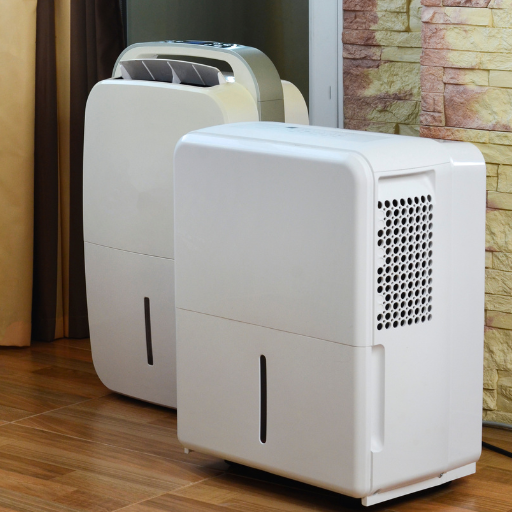
When handling the issues humid air may cause, a dehumidifier is often the go-to solution. Moreover, there are many types of them, and the most popular option, of which there is a sub-category as well, is the whole-house type which is versatile due to its integration into the HVAC system and allows the wider area to be covered rather than only selected rooms. Of course, there are more methods of handling humidity without installing or using a whole-house dehumidifier, for instance ventilation and air conditioning, however, the standalone methods of handling moisture might need some supplementation to properly manage and maintain a constant humidity level in temperature variations. This time saving machine does not require frequent maintenance and can be left alone to operate.
Whole-home dehumidifiers vs. portable units – Factors to consider
One cannot overlook the convenience that whole-home systems bring when stacked up against portable ones. To begin with, they are able to control the humidity of an entire house instead of relocating devices and adjusting them throughout the day. They can also take full advantage of the existing HVAC system and come with built-in control panels that allow an energy-efficient and silent operation, unlike portable devices, which tend to be noisy. However, these devices do tend to be expensive and require the assistance of a professional for installation, whereas portable units are cheaper and easier to install. However, Portable units do not possess the ability to control moisture on a larger scale as they only have a specific area which can be drenched without manual intervention.
Basement and crawl space dehumidifers
The basement and crawl space are IPM dewy areas as they are located close to ground water and have limited ventilation openings. Climate-controlled dehumidifiers with low-temperature capabilities and significant moisture extraction rates are the most appropriate for these zones. For example, crawl space dehumidifiers are constructed smaller in size and built sturdily which are useful in compact installations limiting mold and building damage. Also, for the case of basements, dehumidifiers with built-in pumps with the capability for automatic draining also help in the constant running of the equipment without servicing. The combination of sealing these areas with the correct position of the dehumidifier gives a much better result in humidity control in the long term.
Improvised results of air conditioning systems while being integrated with dehumidification
The combination of dehumidification processes with air conditioning is expected to improve comfort levels and energy efficiency inside the building significantly. Essentially, systems for air conditioning are designed to lower the air temperature through heat extraction and some water, however, with the use of standalone dehumidifier such control goes into specifics for areas where the humidity is quite high. Together these two solutions not only improve the performance of the equipment but possibly decrease its energy consumption by reducing the operational load of the air conditioning system. Further, proper indoor humidity levels not only allow better indoor air quality to be promoted but also reduce the chances of mold growth, and the cooling equipment also works longer.
Reference sources
Frequently Asked Questions (FAQs)
Q: What is a whole house dehumidifier and how does it differ from a portable dehumidifier?
A: A whole house dehumidifier is an HVAC dehumidifier that integrates with your home’s central air conditioning system to remove moisture throughout your entire home. Unlike a portable dehumidifier that only dehumidifies a single room, a whole house system can effectively manage humidity levels in your entire living space, providing better overall home comfort and potentially reducing utility bills.
Q: How do whole house dehumidifiers work?
A: Whole house dehumidifiers work by drawing air from your home through the return ducts, removing excess moisture, and then circulating the dehumidified air back through your home’s ductwork. This process helps maintain optimal humidity levels throughout your home, improving indoor air quality and reducing the need for air conditioning.
Q: Can I add a dehumidifier to an existing HVAC system?
A: Yes, you can add a dehumidifier to an existing HVAC system. Many whole house dehumidifiers, are designed to be integrated with your current central air conditioning system. It’s best to contact a professional HVAC technician to ensure proper installation and compatibility with your existing setup.
Q: What are the benefits of installing a whole house dehumidifier?
A: Installing a whole house dehumidifier can provide numerous benefits, including improved indoor air quality, reduced allergens, prevention of mold and mildew growth, increased energy efficiency, and enhanced overall comfort. It can also help protect your home and belongings from moisture damage and potentially alleviate symptoms for those with allergies and asthma.
Q: How do I know if a whole house dehumidifier is right for my home?
A: If you consistently experience high indoor humidity levels, musty odors, or have a basement home prone to moisture issues, a whole house dehumidifier might be the right solution. Additionally, if you live in a humid climate or have recurring mold problems, investing in a whole house system can be worth considering. Contact us today for a professional assessment of your home’s specific needs.
Q: Are whole house dehumidifiers energy efficient?
A: Many whole house dehumidifiers are designed to be energy efficient. Look for models with the Energy Star Most Efficient certification. These units can help you maintain optimal humidity levels while minimizing energy consumption and potentially reducing your overall utility bills.
Q: How does a whole house dehumidifier impact my AC system?
A: A whole house dehumidifier can complement your AC system by removing moisture from the air, allowing your air conditioner to focus on cooling rather than dehumidifying. This can lead to improved efficiency, potentially lower energy costs, and a more comfortable indoor environment. In some cases, it may even reduce the need for air conditioning during milder weather.
Q: How often should I maintain my whole house dehumidifier?
A: Regular maintenance is essential for optimal performance. Generally, you should clean or replace the filter every 6-12 months, depending on usage and manufacturer recommendations. It’s also advisable to have a professional HVAC technician inspect and service your unit annually to ensure it’s functioning efficiently and to address any potential issues.
Q: Where can I find more information about whole house dehumidifiers?
A: For more information about whole house dehumidifiers and to determine if one is right for your home, we recommend reviewing our frequently asked questions about whole house dehumidifiers or contacting us today. Our experts can help you find the right dehumidifier for your specific needs and provide guidance on installation and maintenance.



